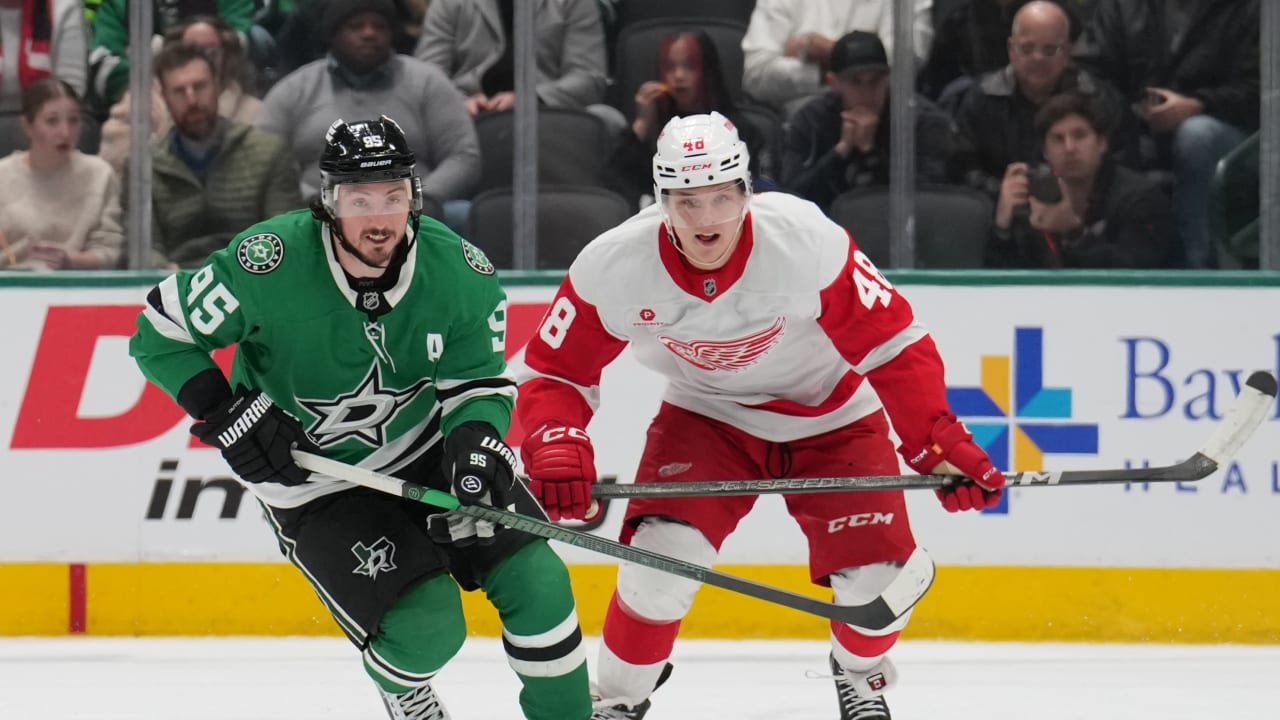Sports
Jim Harbaugh gushes over talent of veteran Chargers: 'I feel lucky to be here'
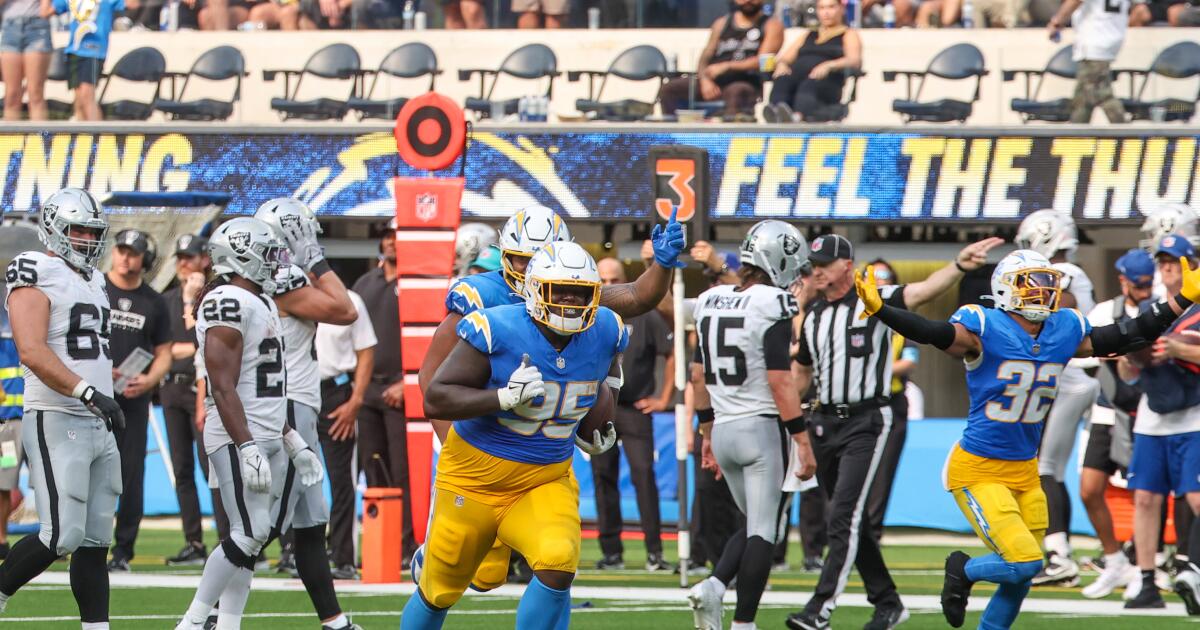
Jim Harbaugh made a beeline toward midfield, shook Raiders coach Antonio Pierce’s hand and turned right around toward the sideline. There was no extra pomp for Harbaugh’s first win as the Chargers’ coach. This circumstance called for him to duck straight into the locker room.
The Chargers’ 22-10 win over the Las Vegas Raiders, Harbaugh insisted, was not about him. Instead, it belonged to Derwin James Jr., Justin Herbert, Joey Bosa, Khalil Mack and the veteran Chargers whose own hard work was formerly overshadowed by the franchise’s forgettable results.
“They’ve been playing that way long before us newcomers arrived on the scene,” Harbaugh said Monday. “So I feel lucky to be here, to be able to be coaching these guys, as do the rest of the coaches on the staff. That’s the L.A. Chargers mentality.”
Harbaugh commended James, the three-time Pro Bowl selection, for recording his 500th career tackle. The safety was the fastest defensive back since the turn of the century to reach 500 tackles. When James, who finished with seven tackles, was shown on the sideline during the game with a graphic commemorating the milestone, his face remained unchanged.
That’s the hard-working, focused example Harbaugh wants the Chargers to portray in their new era.
“It took me one practice and a half to realize that the way No. 3 does things, let’s all do it like that,” Harbaugh said.
Harbaugh’s way, from his success at Stanford, the San Francisco 49ers and Michigan, has been characterized by a dominant running game and a punishing defense. The Chargers flashed those traits Sunday, racking up their best rushing performance since the 2023 season opener and forcing three turnovers on defense.
When Harbaugh was presented a game ball in the locker room by team owner Dean Spanos, the coach later passed it to running back J.K. Dobbins, who rushed for 135 yards and one touchdown.
Dobbins thanked the offensive line for blocking, Herbert for running the offense and the defense for keeping the team afloat when the offense was struggling during the first half. The communal approach is Harbaugh’s true way.
“I wouldn’t even say that coach ever comes in and says, ‘I want it to be my way, or this way,’” defensive lineman Morgan Fox said. “Coach comes in and says, ‘This is our way.’ … He wants to play our way and our way is our best, and our best is more physical and fast and relentless.”
Etc.
The Charges signed cornerback Nehemiah Shelton to the practice squad and released cornerback Matt Hankins. Shelton, a Gardena Serra alumnus, has been with the New York Jets for the last two seasons after going undrafted out of San José State in 2023.

Sports
Lindsey Vonn crashes while on pace for podium finish at 2026 Olympic venue

Lindsey Vonn crashed out of a World Cup Super-G race on Sunday while on pace for her best finish so far in her comeback to alpine skiing.
The American star was tracking toward a podium spot in Cortina d’Ampezzo, Italy — on the hill that will host the 2026 Olympics — when she went down onto her left side coming around a turn just over 50 seconds into her run and spun in the snow. She slammed her pole in frustration, got up on her own power, and skied down the hill, waving to the crowd at the bottom.
Vonn, one of 10 skiers who didn’t finish Sunday, had the 10th fastest split in the first sector of the race and fourth quickest in the second. She was just a half-second off the lead at that point — a pace that would’ve netted her a top-three position had she kept it up through the finish. Italy’s Federica Brignone won in 1:21.64, with the Swiss pair of Lara Gut-Behrami (1:22.22) and Corinne Suter (1:22.72) rounding out the podium.
“I definitely made some mistakes on the top, but I got a little bit behind the course and tried to pull it off,” Vonn told reporters after the race. “Then my skis kind of clicked together and I lost my balance.”
Lindsey Vonn shows her frustration as she makes her way down the mountain following her fall in Sunday’s Super-G race in Cortina d’Ampezzo, Italy. (Julian Finney / Getty Images)
The Super-G crash was her second of the weekend after Vonn also went down during downhill training on Thursday.
It was Vonn’s fifth race back on the World Cup circuit since announcing an unlikely return to the sport after nearly six years away. Injuries drove her to retire in 2019, but a knee replacement in 2024 left her feeling pain-free and planning a comeback. She returned in December and finished 14th in a Super-G in St. Moritz, Switzerland, then took sixth in downhill and fourth in Super-G last week in St. Anton, Austria. On Saturday in Cortina, Vonn finished 20th in downhill.
A three-time Olympic medalist, including gold in the downhill at the 2010 Vancouver Games, Vonn holds the all-time record with 12 World Cup wins at Cortina d’Ampezzo, which will host the 2026 Games on the Olympia delle Tofane track that is a regular stop on the women’s tour.
In a post on X later Sunday, Vonn didn’t seem all that deterred by the rough weekend at one of her favorite venues.
“S— happens,” she wrote. “On to the next race.”
Tracking Lindsey Vonn’s World Cup return
| Date | Venue | Discipline | Pos. | Time | Behind lead |
|---|---|---|---|---|---|
|
Dec. 21 |
St. Moritz |
Super-G |
14th |
1:16.36 |
1.18 |
|
Jan. 11 |
St. Anton |
Downhill |
6th |
1:16.66 |
0.58 |
|
Jan. 12 |
St. Anton |
Super-G |
4th |
1:18.75 |
1.24 |
|
Jan. 18 |
Cortina d’Ampezzo |
Downhill |
20th |
1:35.63 |
1.68 |
|
Jan. 19 |
Cortina d’Ampezzo |
Super-G |
DNF |
N/A |
N/A |
Jacqueline Wiles was the top American in Saturday’s downhill, finishing seventh. Lauren Macuga, the rising 22-year-old who won the St. Anton Super-G for her first World Cup race win, was the top U.S. finisher Sunday, taking 13th.
Vonn’s fourth-place finish in St. Anton made her the oldest woman to finish that high in a World Cup race. The 34-year-old Brignone, who now has four victories this season, is the oldest to ever win a World Cup race.
The strong results have brought Vonn back into the picture at the sport’s highest level. She’s 17th in the World Cup downhill standings and 14th in Super-G. Last week, Vonn told the Associated Press that she would retire again after the 2026 Olympics, if she makes the U.S. team there. The Olympic women’s alpine skiing program is slated to begin Feb. 8, 2026.
The World Cup speed skiing circuit heads to Garmisch-Partenkirchen, Germany, next weekend, where Vonn is again scheduled to compete in the downhill and Super-G. After that, the World Cup schedule pauses for the world championships in Saalbach, Austria, which begin Feb. 4.

GO DEEPER
Lindsey Vonn, at historic stop for women’s alpine, kicks off her World Cup return
(Photo of Lindsey Vonn during Sunday’s Super-G: Mattia Ozbot / Getty Images)
Sports
Josh Allen scores 2 touchdowns, Bills force 3 turnovers in divisional round win over Ravens
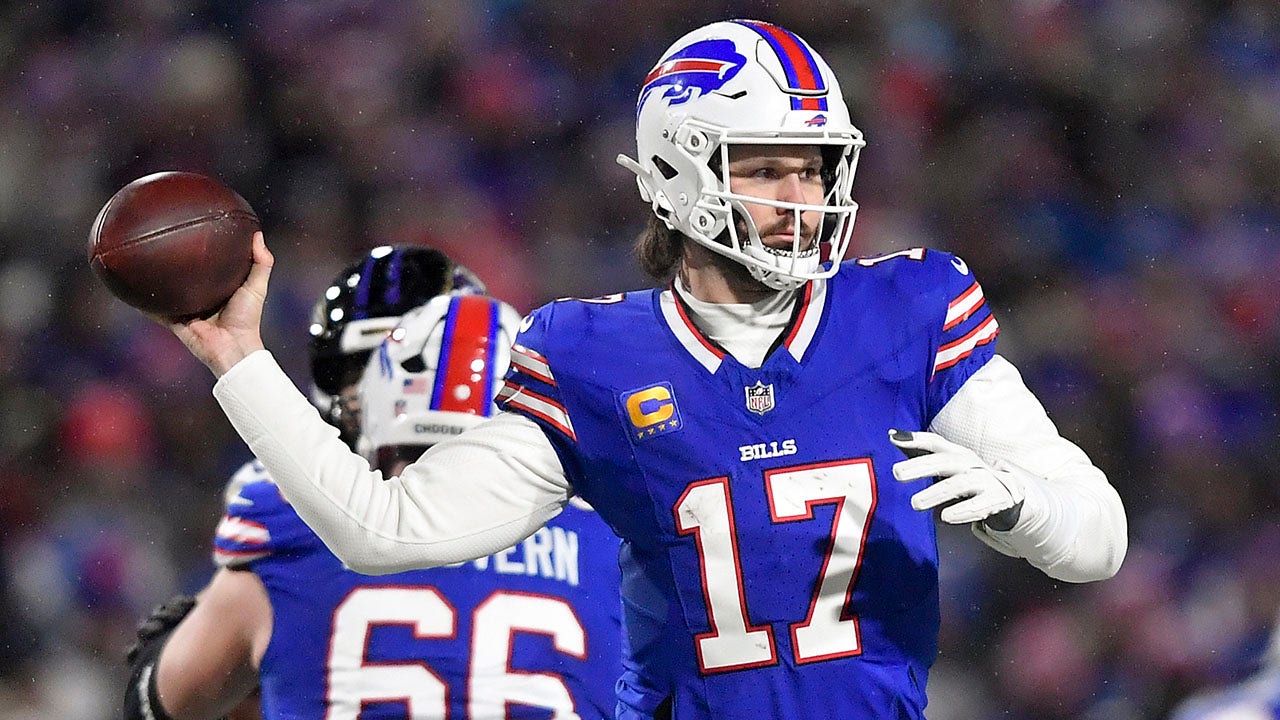
NFL fans usually use the phrase “frozen tundra” to describe the conditions at Lambeau Field in Green Bay, Wisconsin. But on Sunday night, it could have been used to describe the field at Highmark Stadium for the playoff game between the Buffalo Bills and Baltimore Ravens.
Temperatures in Orchard Park, New York, fell to around 16 degrees as light snow fell onto the field. It made the ball slippery and tougher to catch as well as made the tackles hurt just a little bit more.
Buffalo Bills quarterback Josh Allen passes against the Baltimore Ravens during the second quarter of the divisional playoff game, Sunday, Jan. 19, 2025, in Orchard Park, N.Y. (AP Photo/Adrian Kraus)
The Bills held the lead in the fourth quarter with two Tyler Bass field goals and won the game, 27-25.
It was the Ravens who felt the brunt of the conditions late in the game.
Lamar Jackson found tight end Mark Andrews for a 16-yard completion with 8:50 left in the game. But Bills linebacker Terrel Bernard punched the ball out of Andrews’ hands and Buffalo recovered the fumble. It was one of three turnovers Baltimore committed.
It was far from over.
Jackson and the Ravens could still tie the game up. He led the team on an eight-play, 88-yard drive that ended with a 24-yard touchdown pass to Isiah Likely. The Ravens were down two points.
SAQUON BARKLEY CARVES UP RAMS DEFENSE IN SNOW, EAGLES MOVE TO NFC TITLE GAME
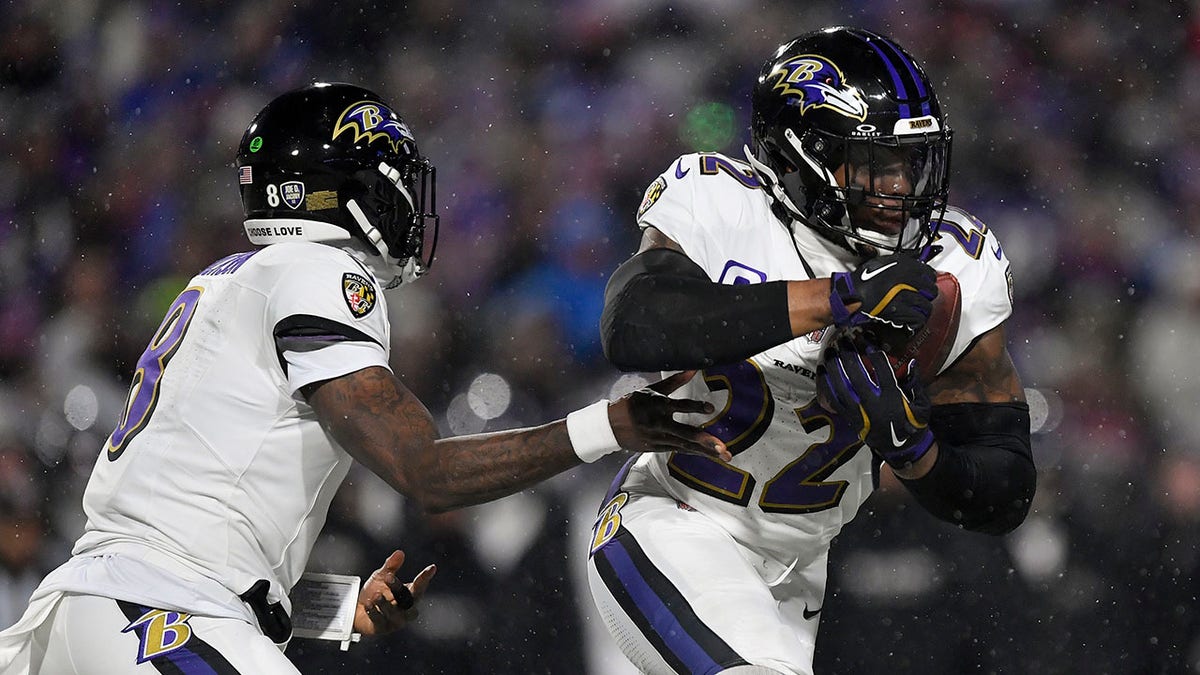
Baltimore Ravens quarterback Lamar Jackson (8) hands off the ball to running back Derrick Henry during the first quarter Sunday night. (AP Photo/Adrian Kraus)
Baltimore got set for the 2-point conversion attempt. Jackson broke out to his right and had Andrews open. The ball went into the veteran tight end’s hands, but he could not come up with the catch. The Bills breathed a sigh of relief and closed the game out.
Josh Allen finished with two rushing touchdowns in the game. He was 16-of-22 passing with 127 yards.
For the Ravens, their magical season came to an end.
Jackson was 18-of-25 with 254 passing yards, two touchdown passes and an interception. The Bills’ defense held Derrick Henry to 84 rushing yards. It was the fewest yards he had since Dec. 15 against the New York Giants.
The Bills next meet the Kansas City Chiefs in the AFC Championship with a trip to Super Bowl LIX on the line. Buffalo beat Kansas City on Nov. 17, 30-21.
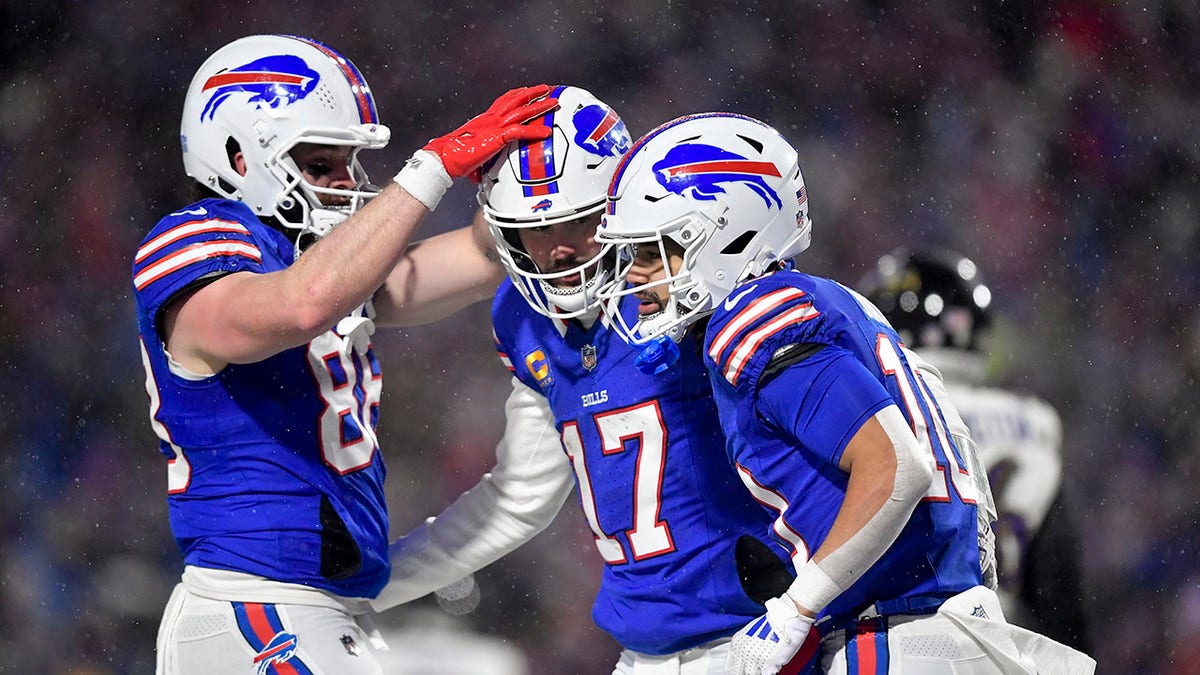
Buffalo Bills wide receiver Khalil Shakir (10) celebrates with quarterback Josh Allen (17) and tight end Dawson Knox after a touchdown against the Baltimore Ravens during the second quarter on Sunday. (AP Photo/Adrian Kraus)
Buffalo hasn’t made a Super Bowl since the 1993 season. They have never won a Super Bowl. It will be their first conference championship game since the 2020 season. They lost to the Chiefs in that game.
Follow Fox News Digital’s sports coverage on X and subscribe to the Fox News Sports Huddle newsletter.
Sports
Rams' Jared Verse wasn't just talk in Philadelphia, but his impactful day wasn't enough

PHILADELPHIA — Jared Verse was the talk of the town before Sunday’s NFC divisional-round game between the Rams and the Philadelphia Eagles.
After the Rams rookie edge rusher told The Times last week that he hated Eagles fans and found them annoying, he became the target of heated fan discussion on local sports radio. A billboard even featured his quote.
Verse, however, embraced the role of the villain and had two of the Rams’ seven sacks in a 28-22 defeat at Lincoln Financial Field.
“It’s not like, ‘Oh, I’m going to shy away or get nervous’ or anything like that,” Verse said. “Nah, that turns me up. That hypes me up.”
About 90 minutes before kickoff on a cold day that would later feature snow, Verse slowly toured the entire perimeter of the field in a sleeveless black shirt, gray sweat pants and a blue beanie.
As he left the field with teammate Byron Young, he put his hand to his ear, inviting fans to increase the volume of their comments. When the Rams emerged from their locker room in uniform for pregame warmups, Verse was the last player out of the tunnel.
After the Eagles’ first possession, which ended with a long touchdown run by quarterback Jalen Hurts, the stadium video board featured a shot of Verse, who was loudly booed.
When Verse sacked Hurts in the second quarter, he lifted his arms, skipped off the field and jawed with fans behind the Rams bench.
Verse, a front-runner for NFL defensive rookie of the year, said he thought he played well but could have done more for a Rams defense that allowed Saquon Barkley to rush for 205 yards and two long touchdowns.
“I could have been better,” Verse said. “There’s more I could have done.”
As with coach Sean McVay and teammates, Verse lamented the way the season ended.
“It sucks how much adversity we had to overcome,” he said, “and in these final moments we weren’t able to overcome any more.”
Verse, the No. 19 pick in the draft, said he learned a lot during his rookie season.
“There’s like some dawgs out there,” he said, “You’re going to play every team that somebody is going to really test you.”
Verse said he would use what happened Sunday as motivation going into the offseason.
“Never want to feel like this again,” he said. “I don’t want my teammates to feel like this again.
“I don’t want to look in their eyes and see anything but pure bliss and pure happiness. And I’m going to do everything in my power to makes sure that doesn’t happen again.”
-

 Science1 week ago
Science1 week agoMetro will offer free rides in L.A. through Sunday due to fires
-
/cdn.vox-cdn.com/uploads/chorus_asset/file/23935558/acastro_STK103__01.jpg)
/cdn.vox-cdn.com/uploads/chorus_asset/file/23935558/acastro_STK103__01.jpg) Technology1 week ago
Technology1 week agoAmazon Prime will shut down its clothing try-on program
-
/cdn.vox-cdn.com/uploads/chorus_asset/file/25826211/lorealcellbioprint.jpg)
/cdn.vox-cdn.com/uploads/chorus_asset/file/25826211/lorealcellbioprint.jpg) Technology1 week ago
Technology1 week agoL’Oréal’s new skincare gadget told me I should try retinol
-
/cdn.vox-cdn.com/uploads/chorus_asset/file/25832751/2192581677.jpg)
/cdn.vox-cdn.com/uploads/chorus_asset/file/25832751/2192581677.jpg) Technology4 days ago
Technology4 days agoSuper Bowl LIX will stream for free on Tubi
-

 Business6 days ago
Business6 days agoWhy TikTok Users Are Downloading ‘Red Note,’ the Chinese App
-
/cdn.vox-cdn.com/uploads/chorus_asset/file/25835602/Switch_DonkeyKongCountryReturnsHD_scrn_19.png)
/cdn.vox-cdn.com/uploads/chorus_asset/file/25835602/Switch_DonkeyKongCountryReturnsHD_scrn_19.png) Technology3 days ago
Technology3 days agoNintendo omits original Donkey Kong Country Returns team from the remaster’s credits
-
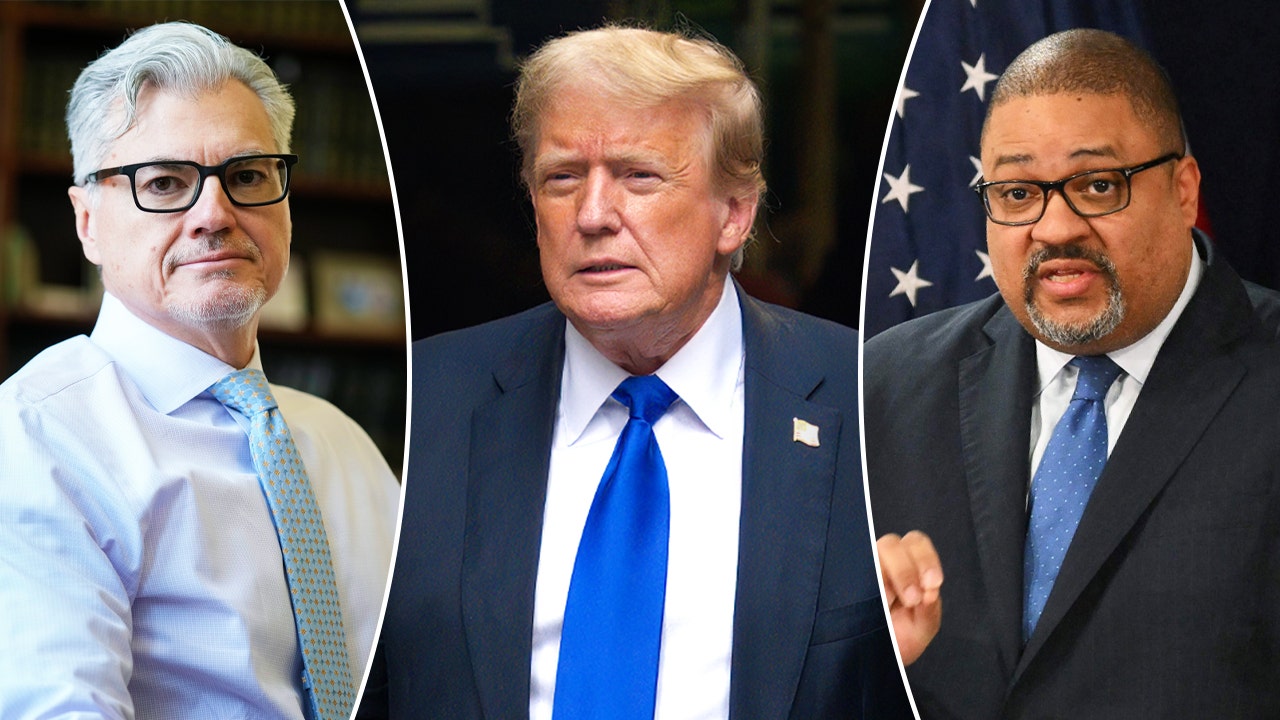
 Politics1 week ago
Politics1 week agoTrump to be sentenced in New York criminal trial
-

 Culture2 days ago
Culture2 days agoAmerican men can’t win Olympic cross-country skiing medals — or can they?

